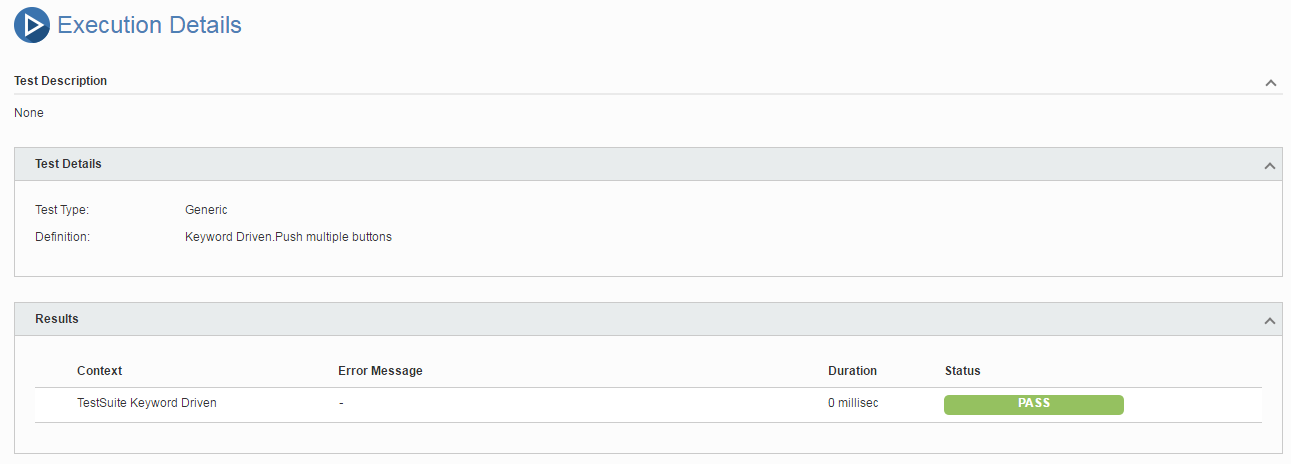Overview
In this tutorial, we will execute some tests using the Robot Framework.
Please note
This tutorial explores the integration using the JUnit XML report that the Robot Framework is capable of generating.
However, the Robot Framework native XML format is supported by Xray. Thus, it is the preferable way of importing tests/results from Robot test cases. When integrating through Robot's specfic XML format, you have access to more features than the ones that are available if you use JUnit's XML format, since the latter is more generic.
Requirements
- Robot Framework
- Java (if using the Java variant of the "robot framework")
Description
This and more examples are found in Robot Framework's robotdemo repository.
class Calculator(object):
BUTTONS = '1234567890+-*/C='
def __init__(self):
self._expression = ''
def push(self, button):
if button not in self.BUTTONS:
raise CalculationError("Invalid button '%s'." % button)
if button == '=':
self._expression = self._calculate(self._expression)
elif button == 'C':
self._expression = ''
elif button == '/':
self._expression += '//' # Integer division also in Python 3
else:
self._expression += button
return self._expression
def _calculate(self, expression):
try:
return str(eval(expression))
except SyntaxError:
raise CalculationError('Invalid expression.')
except ZeroDivisionError:
raise CalculationError('Division by zero.')
class CalculationError(Exception):
pass
This is the Robot test.
*** Settings ***
Documentation Example test cases using the keyword-driven testing approach.
...
... All tests contain a workflow constructed from keywords in
... ``CalculatorLibrary.py``. Creating new tests or editing
... existing is easy even for people without programming skills.
...
... The _keyword-driven_ appoach works well for normal test
... automation, but the _gherkin_ style might be even better
... if also business people need to understand tests. If the
... same workflow needs to repeated multiple times, it is best
... to use to the _data-driven_ approach.
Library CalculatorLibrary.py
*** Test Cases ***
Push button
Push button 1
Result should be 1
Push multiple buttons
Push button 1
Push button 2
Result should be 12
Simple calculation
Push button 1
Push button +
Push button 2
Push button =
Result should be 3
Longer calculation
Push buttons 5 + 4 - 3 * 2 / 1 =
Result should be 3
Clear
Push button 1
Push button C
Result should be ${EMPTY} # ${EMPTY} is a built-in variable
After running the tests and generating the JUnit XML report (e.g., robot.xml), it can be imported to Xray (either by the REST API or through the Import Execution Results action within the Test Execution).
If you're using Python,
robot -x robot.xml keyword_driven.robot
Or if you're using Java,
java -jar robotframework-3.0.jar -x robot.xml keyword_driven.robot
JUnit's Test Case is mapped to a Generic Test in Jira, and the Generic Test Definition field contains the friendly name of the Robot script concatenated with the alias of the test case.
The Execution Details of the Generic Test contains information about the Test Suite, which in this case corresponds to the friendly name of the Robot script (i.e., "Keyword Driven").

